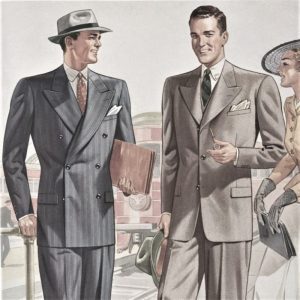When the History of Clothing Begin?
The History of Clothing, It is not certain when people first started wearing clothes. However, anthropologists estimate that it was somewhere between 100,000 and 500,000 years ago. Simple needles made out of animal bone. Provide evidence of sewn leather and fur garments from at least 30,000 years ago.
When settled Neolithic cultures discovered the advantages of woven fibers over animal hides, the making of cloth. Drawing on basketry techniques, emerged as one of humankind’s fundamental technologies. Hand and hand with the history of clothing go the history of textiles.
The History of Clothing, Ready-Made Clothing
Before sewing machines, nearly all clothing was local and hand-sewn. There were tailors and seamstresses in most towns that could make individual items of clothing for customers.

The Many Functions of Clothes
Clothing serves many purposes: it can help protect us from various types of weather. And can improve safety during hazardous activities such as hiking and cooking. It protects the wearer from rough surfaces, rash-causing plants, insect bites, splinters, thorns, and prickles. By providing a barrier between the skin and the environment. Clothes can insulate against cold or heat. They can also provide a hygienic barrier, keeping infectious and toxic materials away from the body. Clothing also provides protection from harmful UV radiation.
The most obvious function of clothing is to improve the comfort of the wearer. By protecting the wearer from the elements. In hot climates, clothing provides protection from sunburn or wind damage, while in cold climates. Its thermal insulation properties are generally more important. Shelter usually reduces the functional need for clothing. For example, coats, hats, gloves, and other superficial layers are normally removed when entering a warm home, particularly if one is residing or sleeping there. Similarly, clothing has seasonal and regional aspects, so thinner materials and fewer layers of clothing are generally worn in warmer seasons and regions than in colder ones.
Clothing performs a range of social and cultural functions, such as individual, occupational and sexual differentiation, and social status. In many societies, norms about clothing reflect standards of modesty, religion, gender, and social status. Clothing may also function as a form of adornment and an expression of personal taste or style.
Some clothing protects from specific environmental hazards, such as insects, noxious chemicals, weather, weapons, and contact with abrasive substances. Conversely, clothing may protect the environment from the clothing wearer, as with doctors wearing medical scrubs.
The History of Clothing















